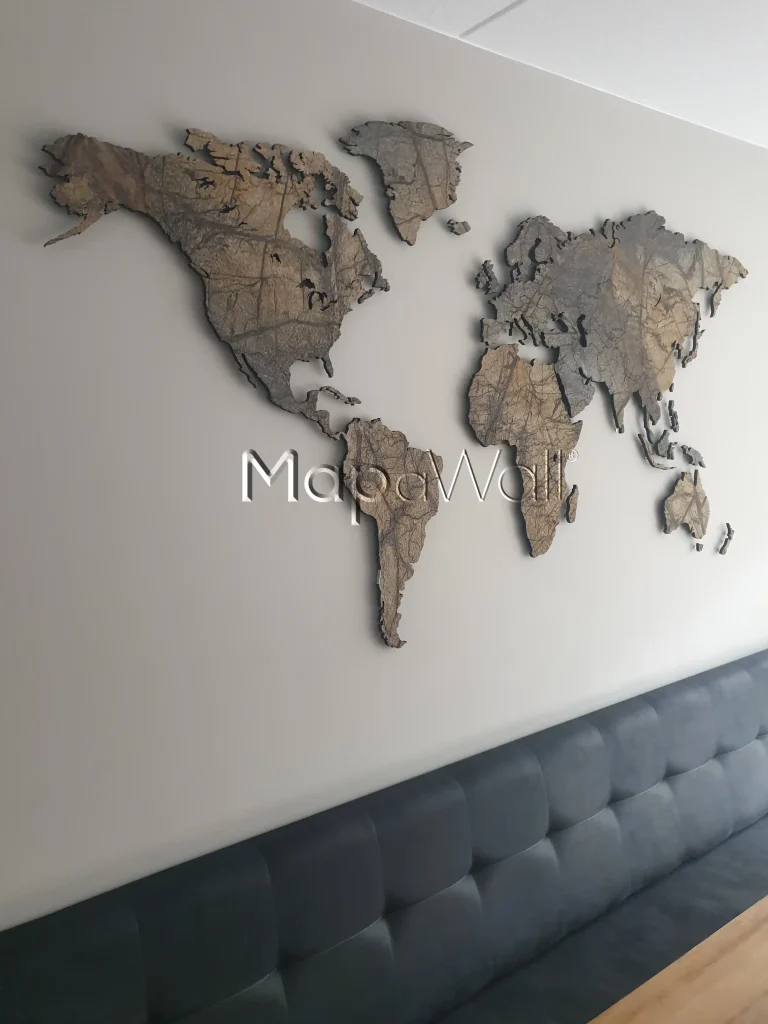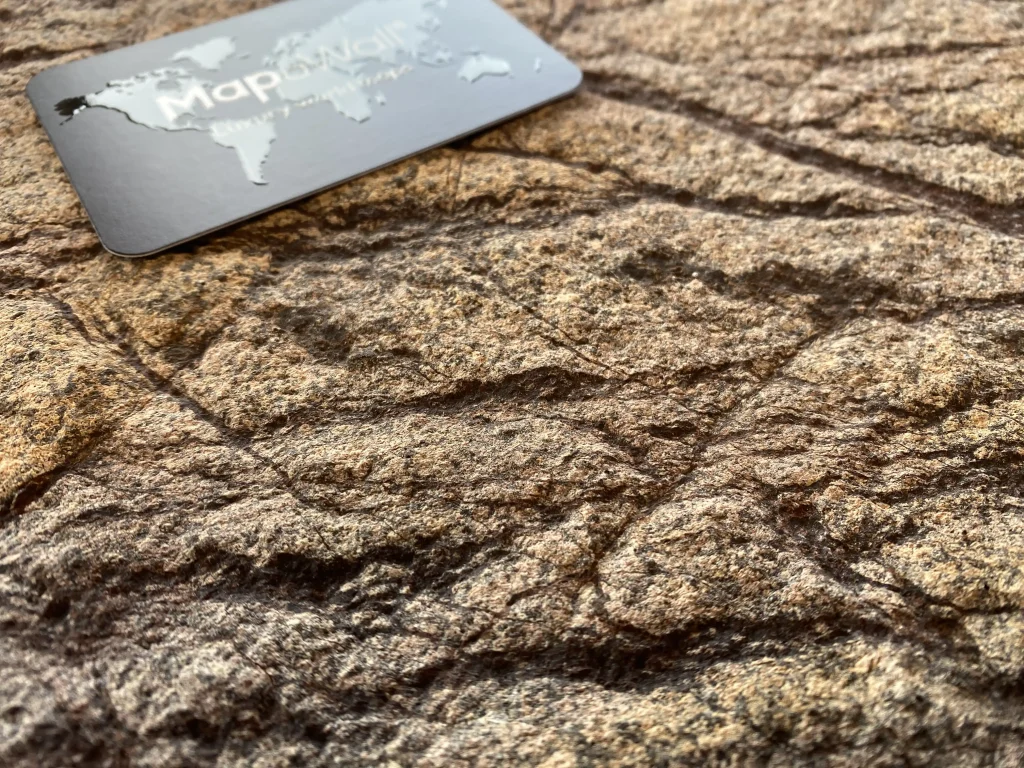We've explored the endless possibilities of crafting a world map from various types of stone, yet one particularly well worth option remains unexplored: the marble map. Today, we'll delve into an example featuring brown marble, known as the Hawksbill Brown.
When you say marble, the image that often comes to mind is of a polished surface, mostly one with a glossy finish. This is similar to the map we discussed in a previous post. The stone world map constructed from a solid 2 cm (approx. 0.8 inch) thick slab of Grigio Orobico marble, this stone map underwent the same polishing process as any other fine piece of furniture. However, a distinctive approach was taken with this particular map.

Advancements in technology have paved the way for a novel technique: embedding various types of stone onto thin sheets of synthetic resin. By adhering rock fragments to this adhesive sheet, a thin layer of authentic stone is formed. Once fully hardened, the result is a slab of genuine rock suitable for wall decoration or further processing into furniture, among other applications. The featured map today was made with this innovative method, a layer of brown marble characterised by stunning veins ranging from light to dark brown.

The key disparity between the traditional brown polished marble slab and the marble sticked to a synthetic layer lies in both surface finish and weight. Whereas a solid marble slab of this size weighs over 100 kg (approximately 220 pounds), a map created with this marble on a synthetic layer weighs just 3 kg (approximately 7 pounds). Additionally, while the massive marble has a glossy surface, the thin stone veneer possesses a really rough texture. Besides, this particular brown marble has notable variations in thickness, with the topping ranging from 1-5 mm (approximately 0.39- 0.59 inch). Upon closer inspection, these irregularities resemble authentic mountain formations, adding a captivating dimension to the map's aesthetic appeal.